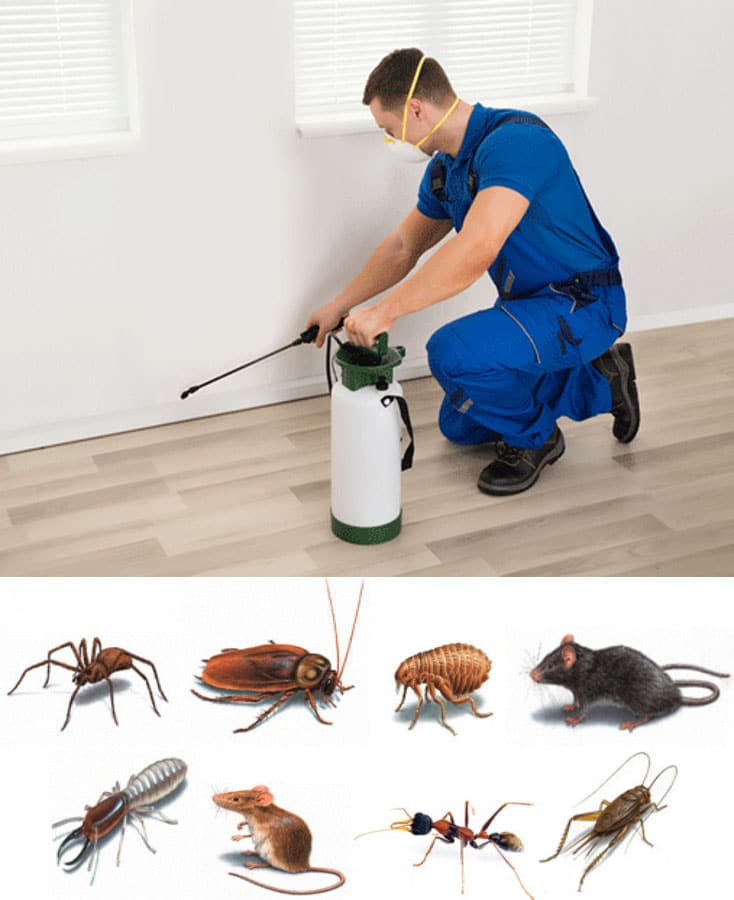Getting ready your home for pest treatment is an essential aspect in ensuring the success of the treatment and keeping a pest-free environment. Several homeowners fail to recognize the value of adequate preparation, leading to less satisfactory outcomes. Regardless of whether you are facing usual pests or anticipating more aggressive treatments, taking the time to prepare your area can create a notable change.
In this guide, we will take you through the crucial steps needed to prepare your space before the extermination team comes. From removing clutter and sealing access points to safeguarding your pets and kids, each action plays a key role in the overall success of pest management. By knowing what to expect and how to set up a favorable environment for management, you'll be better equipped to keep your space pest-free throughout the year. Now we explore the process of preparation so you can enjoy a secure and effective pest control experience.
Understanding Frequent Residential Pests
Frequent household pests can be a major annoyance, therefore it is crucial to understand their patterns and habits. Ants, for example, are communal insects that frequently invade kitchens in search of food and water. They typically form trails to lead their colony to dependable sources, which can swiftly lead to a large infestation. Knowing their patterns can help you detect their entry points and effectively eliminate them.
A further prevalent pest is the cockroach, which thrives in hot, humid environments. These hardy insects can survive on scant food and commonly hide in dark corners, such as behind appliances and within cracks in the surfaces. Cockroaches can pose health risks by spreading bacteria and allergens, making it vital to address an infestation swiftly. Regular inspections can help catch their presence in advance before they become a more major problem.
Bed bugs are another household concern, known for their ability to hide in small crevices and their preference for sucking blood from human blood. They can travel easily, commonly hitching rides on luggage and clothing. Their bites can cause pain and worry, further compounding the situation. Knowledge of these pests, their habits, and preliminary signs of infestation can help homeowners take swift action to prevent widespread issues.

Effective Bug Control Strategies
One of the highly effective strategies for pest control is to identify and close entry points in your house. Common household pests, such as roaches and rodents, often find their way inside through small cracks and gaps. Inspect your home for any potential openings around doors, glass panes, and pipes, and use caulk or weather stripping to seal these areas. Additionally, it is crucial to ensure that screens on glass panes and vents are whole and free of holes. This proactive measure can significantly reduce the probability of pests invading your living space.
Another key strategy is keeping cleanliness and cutting down on clutter. Pests are drawn to food sources and breeding grounds, so it is vital to keep your kitchen and dining areas clean and free of crumbs. Frequently take out the trash, store food in airtight containers, and wipe down surfaces to eliminate any food residue. Moreover, clearing out your home can reduce the hiding spots for pests, making it less welcoming for infestations. Keeping your home orderly not only enhances appearance but also plays a vital role in pest prevention.
Lastly, regular inspections and professional treatments are key components of efficient pest control. Scheduling queen creek pest control helps in identifying any signs of infestations promptly before they become bigger problems. Alongside this, engaging with pest control professionals can provide you with targeted solutions tailored to your specific pest issues. They can offer advice on the regularity of treatments needed for your area and type of pests, guaranteeing that your home remains pest-free year-round.
All-Year Pest Control Tips
To ensure a pest-free home throughout, it is essential to implement a comprehensive approach. Begin by checking all entry points, such as gaps in walls, spaces around windows, and gaps around utility lines, are closed. Regularly inspecting and fixing these areas can establish a solid barrier against pests. Additionally, maintaining neat and organized spaces indoors and outdoors your home can deter unwanted guests. Keep food in sealed containers and keep surfaces clean to lessen food sources for pests.
Time of year changes bring various pests into play, so it is crucial to modify your prevention strategies accordingly. In the spring, concentrate on keeping your yard clean by removing debris and pools of water that draw in insects. During the summer, verify that screens on windows and doors are in good condition to prevent bugs out while embracing fresh air. In the fall, check your home for any openings that might provide shelter for pests seeking warmth as temperatures fall. Finally, in winter, watch for signs of rodents, as they often try to invade homes for warmth.
Lastly, perform regular pest checks, whether by yourself or with a specialist. Remaining proactive by recognizing and addressing potential pest issues before they become serious can save you time and money in the long run. Look into planning inspections every season to catch any early signs of infestations, and regularly keep updated about common pests in your area and the most effective methods for keeping them at bay. Consistent care and vigilance are crucial to a year-round pest prevention plan.
